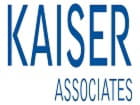Washington Among four Markets in US that will account for more than half of all lease expirations between 2018 and 2022
Law firms are adjusting their real estate strategies in response to advances in technology, shifting client demand, aging workforces and intense competition to attract and retain skilled talent, according to a new report from CBRE. Most commonly, law firms around the country contracted their space by an average of 27 percent between Q1 2016 and Q2 2017.*
The report counts Washington, D.C., among four markets that will account for more than half of all lease expirations between 2018 and 2022, setting the stage for even more consolidated footprints in the market. While D.C.-area law firms that contract reduce their space by an average of 24 percent, Washington also numbers among the eight most expensive legal markets by rent growth. D.C.’s asking rents have increased by ten percent since 2010.
“Major metropolitan areas, such as the nation’s capital, are prime markets for law firms due to both proximity to client networks and access to sought-after talent. But many of these markets have also seen aggressive rent spikes, which drives space contraction and workplace strategy,” said Lou Christopher, Vice Chairman, CBRE. “Law firms with leases expiring in the near term are reconsidering long-held assumptions about how their attorneys work and, when determining their space needs, the services and technology they need to be most effective.”
Because high-quality space is growing in importance for branding and recruitment purposes, most law firms in the prime submarkets of Washington are moving to newly constructed or redeveloped spaces that boast features like increased natural light, high ceilings, and efficient floor plates. Tenant-improvement allowances in D.C. are at all-time highs and are expected to grow further due to the lack of tenant demand.
Space Contraction-Nationwide
Contraction activity has been dominated by Am Law 100 firms—the 100 top-grossing U.S. law firms as ranked annually by American Lawyer—with larger space requirements. Twenty percent of the Am Law 100 firms have reduced their space needs in one or more markets since Q1 2016, according to CBRE data.
CBRE estimates that nearly 29 million sq. ft. of law firm leases will expire between 2018 and 2022 in the 26 markets studied. It is anticipated that more than 70 percent of these expirations involve requirements of more than 50,000 sq. ft., and are likely to see at least some space contraction as part of renewals and/or new leases.
More than half of these expirations are in New York, Chicago, Washington, D.C. and Houston, where there are heavy concentrations of Am Law 100 firms with average leases of 125,000 sq. ft. New York and Chicago are in an extended period of rent growth and declining vacancy, making portfolio optimization critical. Washington, D.C. continues to soften as concessions have steadily increased. Houston remains burdened with an oversupply of sublease space due to the energy industry downturn, and could be particularly attractive to firms looking for lease savings to invest in capital expenditures.
Law Firm Workplace Trends
“Law firms are optimizing their real estate portfolios to avoid excess expenses on antiquated workplaces that value space per attorney over client and employee expectations,” said Ms. Georgas. “To minimize risk around uncertain headcount requirements, many law firms are focused on creating agile workplace strategies through configurable office design and flexible lease structures.”
Some of more common strategies being adopted or considered by law firms include:
- Shifting from two-sized offices (typically 15’ X 15’ for partners and 10’ X 15‘ for associates) to glass-fronted, one-sized offices with seniority recognized by location, not size
- Putting less emphasis on grand, ceremonial client spaces and more emphasis on functional meeting spaces
- Orienting the reception area around hospitality, with concierge services and hosted events
- Transitioning cafeteria space from merely a place to eat to a place to socialize, in a prominent area along a window line
- Creating smaller, on-demand meeting rooms with interactive technology scattered throughout the practice area
Adopting a paperless file storage strategy
“By fostering a modern workplace with a collaborative, inclusive and social environment, law firms can promote knowledge sharing between generations to aid in succession planning and use their office space as a competitive differentiator when recruiting talent,” said Julie Whelan, Americas head of occupier research, CBRE.
*This transaction volume includes only the top 75 percent of transactions by square footage in the 26 markets included in the CBRE report.
About CBRE Group, Inc.
CBRE Group, Inc. (NYSE:CBG), a Fortune 500 and S&P 500 company headquartered in Los Angeles, is the world’s largest commercial real estate services and investment firm (based on 2016 revenue). The company has more than 75,000 employees (excluding affiliates), and serves real estate investors and occupiers through approximately 450 offices (excluding affiliates) worldwide. CBRE offers a broad range of integrated services, including facilities, transaction and project management; property management; investment management; appraisal and valuation; property leasing; strategic consulting; property sales; mortgage services and development services. Please visit our website at www.cbre.com.















